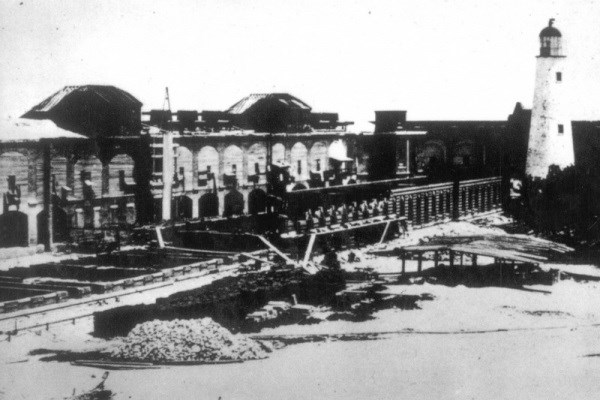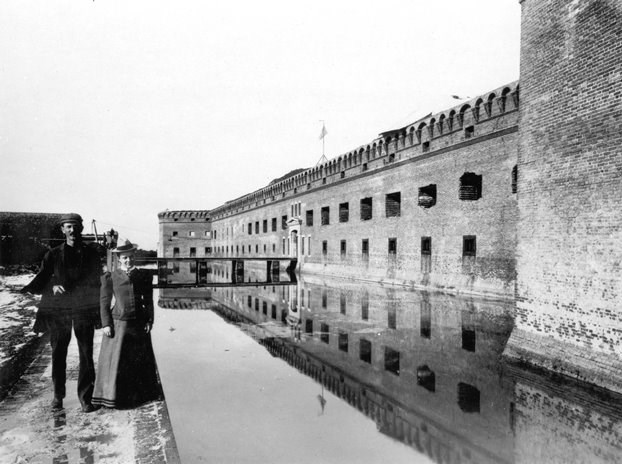
National Park Service Archives One of the largest of America's 19th century coastal forts, Fort Jefferson is one of the central features of the seven "Dry Tortugas Islands" in the Gulf of America. The construction of the fort began in 1846 and was planned and supervised by the U.S. Army Corps of Engineers. The labor force during the early years was made up predominantly of slaves from Key West. Although construction of the fort continued for 30 years it was never completed largely due to changes in weapon technology, which rendered it obsolete by After the Civil War, the fort was used as a federal prison. Among the prisoners kept there were several of the "Lincoln Conspirators." One of these was Dr. Samuel A. Mudd, the physician who set the broken leg of President Abraham Lincoln's assassin, John Wilkes Booth. In 1867, during an outbreak of Yellow Fever, Dr. Mudd helped prison doctors fight the epidemic. Two years later the physician's sentence was commuted and he was released. The Department of the Army officially abandoned Fort Jefferson in 1874. It was established as Fort Jefferson National Monument in 1935 and was rededicated and renamed Dry Tortugas National Park on October 26, 1992. 
National Park Service Archives As you explore the fort, imagine life here during the hectic 1860s. At its height nearly 2,000 people lived within this remote city on the sea. Crowded onto the island were long walkways flanked by lush trees, impressive brick buildings, large wooden storehouses, and numerous tents. Soldiers marched and trained in the broiling sun. Laborers and prisoners hauled bricks and supplies to the masons who continued their never ending task of building the fort. Women and children, though fewer in number, were a welcome sight here. Surrounded by disease, death, and suffering, one wife described Fort Jefferson as "a dark, mean place." The U.S. Army Corps of Engineers faced many challenges during the fort's lengthy construction. Shifting sands, storms, and harsh conditions were common obstacles. The remote location hampered the shipment of supplies and skilled workers, especially during the Civil War. Meanwhile, sections of the fort tarted to sink. In an effort to limit the fort's weight and slow subsidence, the second tier was intentionally left incomplete. Learn more about the stories and daily activities of soldiers and civilians who lived at Fort Jefferson. Transcribed from the original documents, these records re dramatic and detailed: Reuben H. Keim, Fort Jefferson, Tortugas, Fla;May James Smith, MD Battery 5 US H Arty, Fort Jefferson Hugh H. McClune, a political prisoner at Fort Harrison Burgess Herrick, a Union soldier stationed Sam Horner, January 1872 –July 1873 Private Leander Tuller, 110th New York Infantry, George Oakley, Fort Jefferson, Tortugas, Fla., Jan Emily Holder, At the Dry Tortugas During the War, A
|
Last updated: February 24, 2025
